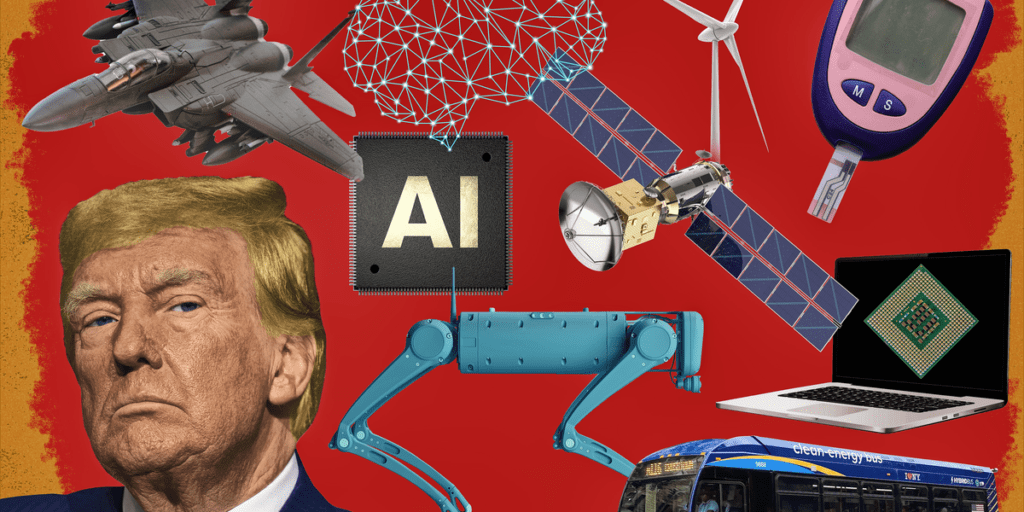Trump’s Second Administration: What it Means for Tech, Transport, and Economy
As Donald Trump prepares to return to the White House in January, many anticipate that his second term will send ripples through the technology landscape, influencing how the sector evolves both in the United States and globally. His cabinet is likely to be packed with individuals connected to the Heritage Foundation, pushing forward the ideologies found in their contentious 900-page blueprint, known as Project 2025. While his presidency will affect a broad spectrum of policies, let’s dive into how specific areas—especially technology, transport, and the economy—could change under his leadership.
Impact on Artificial Intelligence
During his campaign, Trump made headlines by pledging to overturn President Biden’s 2023 executive order on artificial intelligence (AI), claiming that it stifles innovation while promoting leftist agendas in technology development. Experts suggest that if he follows through on this promise, we could see a halt to many regulatory efforts aimed at curbing AI-generated misinformation and addressing algorithmic bias.
However, some groundwork has been laid with initiatives like the AI Safety Institute, which, despite potential efforts to dismantle it, might survive due to its bipartisan support. Doug Calidas from Americans for Responsible Innovation highlights the necessity of maintaining standards to foster safety and trust among corporate users and the public.
Trump is also expected to push for the use of AI for national security and to tighten restrictions around AI technology exports, specifically targeting Chinese firms. Current regulations prevent U.S. companies from selling advanced semiconductors to China, but a significant loophole exists where Chinese firms can utilize U.S.-based cloud services. Closing this loophole may become a priority, alongside restricting access to crucial machine learning resources.
Tariff Implications
Looking ahead, Trump has proposed imposing significant tariffs on imported goods—60% on Chinese products and 25% on those from Canada and Mexico. This could result in steep price increases for popular consumer electronics: laptops might surge by 45%, and video game consoles by about 40%. A report by the Consumer Technology Association indicates that these hikes could diminish U.S. purchasing power by as much as $90 billion each year. Notably, many tariffs from Trump’s first term still continue under Biden, suggesting that tech-related expenses might remain elevated.
Big Tech Regulatory Landscape
While Trump’s previous term saw combative regulatory actions against Big Tech, his new administration might pivot towards a more lenient approach. With an anticipated replacement for the current FTC chair, Lina Khan—known for her aggressive stance on antitrust issues—there’s uncertainty about how scrutiny on major firms like Amazon and Meta will evolve. Nevertheless, it’s clear that many tech executives are congratulating Trump on social media, reflecting a possible warming of relations.
Crypto Enthusiasm
In the cryptocurrency arena, enthusiasm is on the rise since Trump secured the election, with Bitcoin experiencing a notable jump. He’s presented himself as a pro-crypto advocate, envisioning the U.S. as the "crypto capital of the planet." Trump’s vision includes possibly establishing a national Bitcoin reserve, drawing from seized assets, and moving to appoint a more crypto-friendly SEC chair, likely signaling a shift towards minimal regulation.
Energy Policies
Energy is another focal point for Trump, who intends to champion “energy dominance” through increased domestic oil and gas production and deregulation. His nomination of Chris Wright, an oil services executive, to lead the Department of Energy underscores this agenda. While he has voiced support for advanced nuclear technologies like small modular reactors (SMRs), he antagonistically embraces the dissolution of federal incentives for renewable energy sources—a stark contrast to Biden’s climate initiatives.
Transportation Transformation
Project 2025 also outlines substantial changes for the transportation sector, proposing the elimination of federal transit funding, which could have drastic effects on local systems. For instance, New York City’s Metropolitan Transportation Authority could find itself facing major funding cuts that might lead to increased fares and service reductions. This cutback also poses risks to federal programs aiding connectivity for underserved communities.
Trump’s administration may even look into privatizing aspects of the FAA, an effort that could either improve efficiency or dilute oversight, depending on how it’s rolled out. He has also announced plans to scrap the $7,500 tax credit for electric vehicle purchases, indicating a pivot away from promoting green transportation initiatives.
Conclusion
In summary, Trump’s administration appears poised to initiate a wave of reforms across various sectors, from technology and energy to transportation and beyond. As these changes unfold, the implications for innovation, pricing, and regulatory frameworks are significant and worth monitoring closely.
The AI Buzz Hub team is excited to see where these breakthroughs take us. Want to stay in the loop on all things AI? Subscribe to our newsletter or share this article with your fellow enthusiasts.




